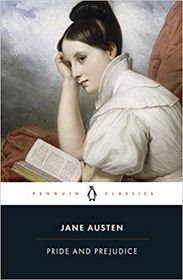Pride and Prejudice


Pride and Prejudice, published in 1813, is one of Jane Austen's most famous and beloved novels. Set in early 19th century England, the novel follows the story of Elizabeth Bennet and her sisters as they navigate the complexities of love, marriage, and social class.
The novel opens with one of the most iconic lines in literature: "It is a truth universally acknowledged, that a single man in possession of a good fortune, must be in want of a wife." This line sets the tone for the novel and establishes one of its central themes: the search for a suitable marriage partner.
The protagonist, Elizabeth Bennet, is a witty and intelligent young woman who is determined to marry for love, rather than for financial gain. Her family, however, is eager for her and her sisters to marry well in order to secure their financial future. This tension between love and money is a recurring theme throughout the novel.
One of the novel's most memorable characters is Mr. Darcy, a wealthy and proud gentleman who initially comes across as arrogant and unapproachable. Elizabeth's first impression of him is one of dislike, and this sets the stage for their complicated relationship. As the novel progresses, however, Elizabeth and Darcy begin to see each other in a new light, and their initial prejudices give way to a deep and meaningful connection.
Austen's portrayal of the Bennet family is also noteworthy. Mrs. Bennet is a comically overbearing mother who is obsessed with finding suitable husbands for her daughters. Mr. Bennet is a more reserved figure who is often exasperated by his wife's antics. The dynamic between these two characters, as well as their interactions with their daughters, provides a rich source of humor and insight into the social norms of the time period.
The novel is also notable for its commentary on social class and the role of women in society. Women during this time period were expected to marry well and secure their financial future, often sacrificing their own desires in the process. Austen critiques this system through her portrayal of characters such as Charlotte Lucas, who marries for financial security rather than love.
The novel is written in Austen's signature style, with sharp wit, clever dialogue, and a keen eye for social observation. Her use of free indirect discourse, which allows the reader to see into the characters' thoughts and emotions, is particularly effective in capturing the nuances of the characters' relationships and motivations.
In conclusion, Pride and Prejudice is a timeless classic that continues to captivate readers today. Austen's exploration of love, marriage, and social class, as well as her memorable characters and sharp social commentary, make this novel a must-read for anyone interested in literature.